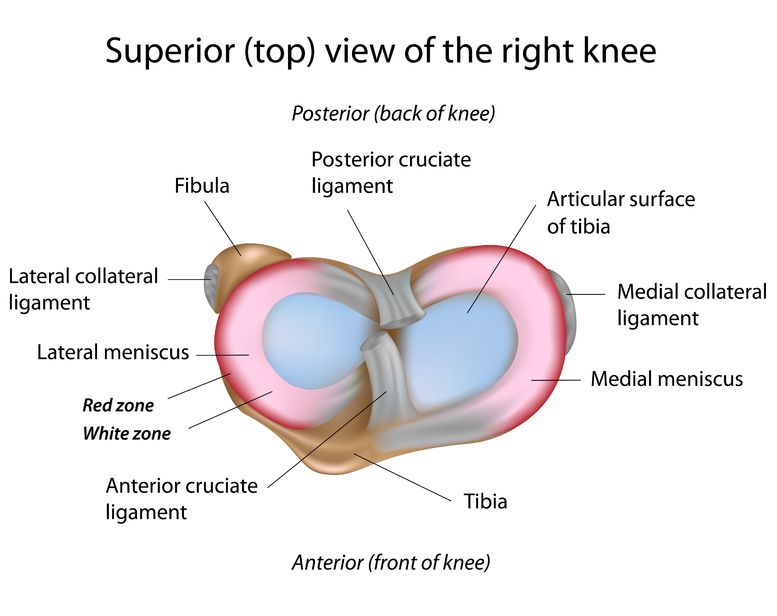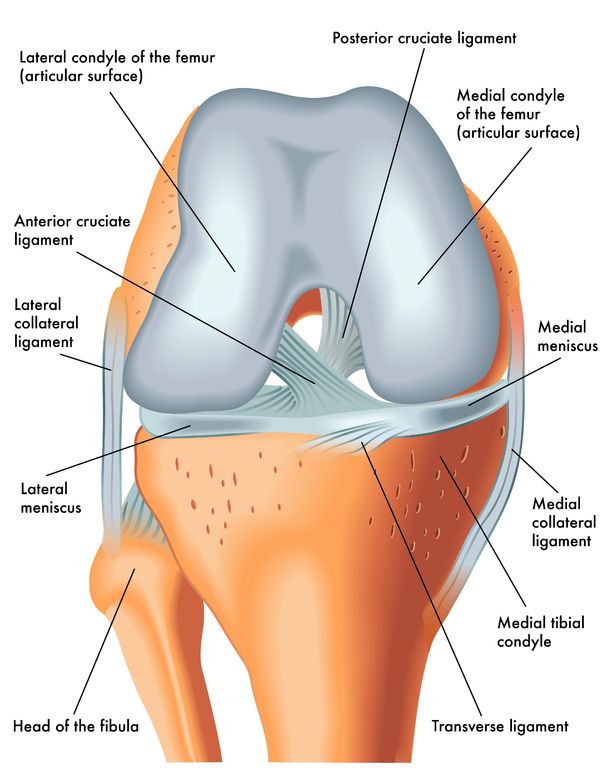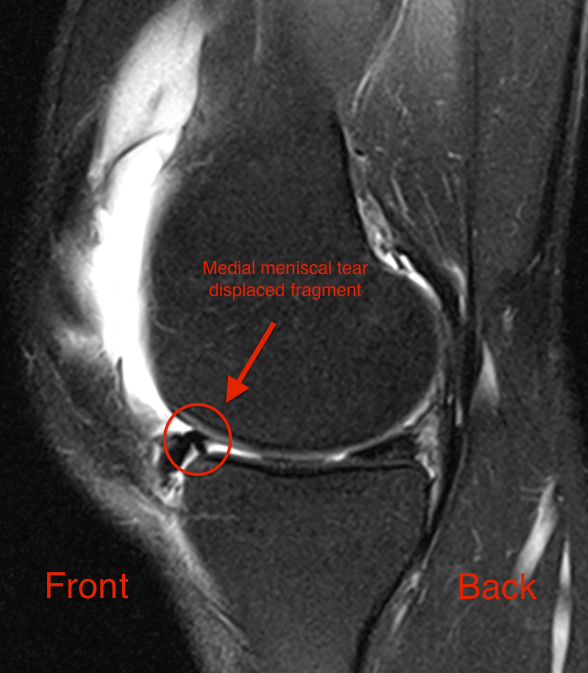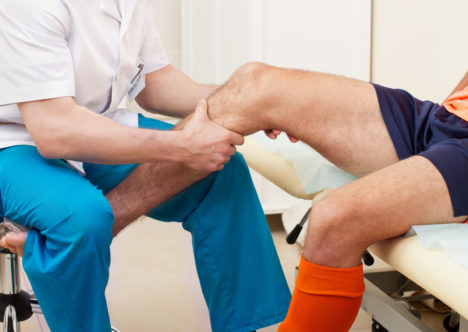Use our convenient online scheduler to book an appointment now.

A torn meniscus is a common, often painful, knee injury. In a previous post, I discussed the definition and causes of a torn meniscus. But what are the symptoms of the injury, and how do doctors make a diagnosis?
To start, let’s review a little about the meniscus.
The Anatomy of the Meniscus
There are two menisci in a healthy knee. Both are rubber-like c-shaped structures located in the knee between the thigh bone and the shin bone. The inner meniscus (located closest to your other leg) is called the medial meniscus.The outer meniscus (located on the side of your knee farthest from your other leg) is called the lateral meniscus. Both of them help protect the cartilage on the ends of the two major bones of the knee and also assist with knee stability.
Torn Meniscus Symptoms
Depending on age, how the injury occurs, and the type of the meniscal tear, torn meniscus symptoms can differ from person to person.
That said, in most cases, torn meniscus symptoms typically include:
- Pain, usually on the same side of the knee as the tear. It may only appear or get worse when you twist your knee.
- Fluid inside the knee (effusion). When present, it is often only a small amount of fluid. A large amount of fluid is much less common and can be a sign of a different problem.
- Occasional clicking or catching, typically on the same side of the knee as the tear.
- Loss of motion. Depending on the type and extent of tear, the degree of immobility varies.
- Occasional knee instability, or a feeling that your knee is giving out. This may be a response to pain.
Symptom Variations
Again, torn meniscus symptoms can vary from person to person. For example, in younger people, the meniscus is usually firm and well fixed to the knee. Because more force is necessary to tear the meniscus, the injury is usually associated with sports or activities that require twisting and bending the knee. Meniscus tears in younger people are also more traumatic and displace more tissue. It’s also common for other knee injuries such as an ACL tear or cartilage damage to occur at the same time.
Because a torn meniscus tends to be more traumatic in a younger person, the symptoms tend to be more pronounced and severe. Most people have significant pain, which may begin immediately and worsen over time. Ultimately, the more traumatic nature of these injuries often means less knee mobility as well.
In comparison, the meniscus in older adults is softer, weaker, and less firmly attached. As a result, meniscal tears may occur more easily and in the course of daily activities, like walking and squatting. Because it can take time for inflammation to develop, you may not even realize you have the injury at first. And even when the injury causes pain, swelling, and stiffness, it may not be as uncomfortable as with a traumatic injury.
How is a Torn Meniscus Diagnosed?
Although a torn meniscus shares similar symptoms with other knee injuries, orthopaedic doctors can usually make a preliminary diagnosis with an exam, and a discussion about what happened and your symptoms. For example, torn meniscus symptoms may diminish or resolve with rest and anti-inflammatory medications, but will often recur once you stop taking medication or return to normal activity. Other injuries, like bruises on the surface of the knee bones, can have similar symptoms, but these symptoms will usually completely resolve after four to six weeks, even if untreated.
During the exam, doctors check for local tenderness and fluid inside the knee. They will also check the knee’s mobility, or try to reproduce your symptoms by twisting and bending the knee. X-ray imaging is often used to rule out other causes for your symptoms. If an X-ray doesn’t reveal other causes for pain, like arthritis or a fracture, then the most likely cause is a torn meniscus.
Sometimes an MRI is necessary to make a definitive diagnosis or to confirm the injury before performing surgery to repair or trim a torn meniscus. Generally speaking, though, orthopaedic sports medicine specialists do not need an MRI to make a diagnosis.
A torn meniscus, while potentially painful, usually isn’t an emergency. If you have symptoms and they don’t improve, get worse, or are accompanied by new or additional symptoms, schedule an evaluation by an orthopaedic sports medicine provider at Town Center Orthopaedic Associates and get started on the path to recovery and returning to your normal activities.
To request an appointment, call Town Center Orthopaedic Associates any time at (703) 435-6604 or book your appointment online.
Join our Mailing List
TCO provides patients with orthopedic problems the trusted resources and patient-centered advice they need to “Feel Better. Move Better. Be Better.”
© 2024 Town Center Orthopaedics | All Rights Reserved





